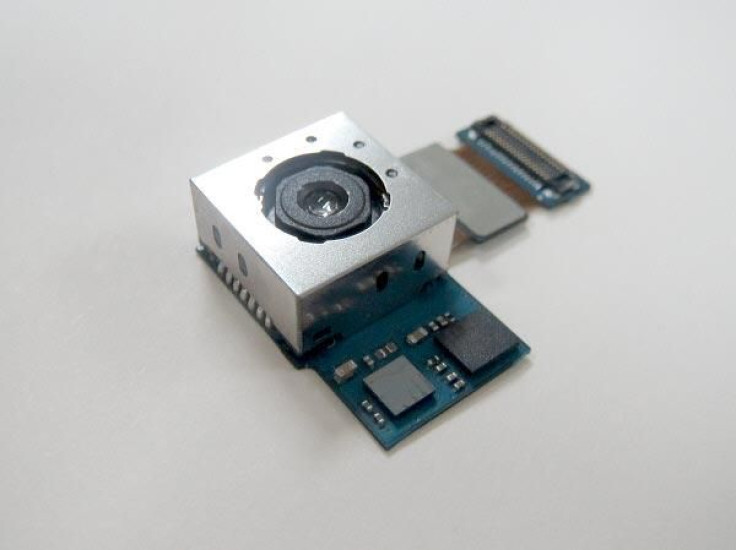Samsung Galaxy Note 4 Could End High-Megapixel Craze With 12-MP Camera

Samsung Electronics Co. (KRX: 005930) may focus on image quality rather than megapixel quantity with its upcoming Samsung Galaxy Note 4, which could indicate that the megapixel race among several smartphone manufacturers over the last few years may be slowing down.
A recent rumor based in Korea suggests that the Galaxy Note 4 might feature a 12-megapixel camera with optical image stabilization (OIS), which corrects image errors caused by camera movement. ETNews reported that after rapidly increasing the megapixel quantity on its mobile cameras for several generations, Samsung wants to focus on addressing the complaints consumers have about its picture quality.
“Having more megapixels will not necessarily give a better [camera] experience,” Jeff Orr, a senior practice director at ABI Research, told International Business Times. “Samsung may be focusing on providing the right amount of megapixels for the applications necessary for the Note series.”
Though the rumor isn't confirmed, it could be a sign that Samsung has conceded to the increasingly prevalent opinion that mobile cameras do not need more megapixels, but rather better-quality lenses and image stabilization.
Samsung spearheaded the trend of higher-megapixel mobile cameras when it released the Galaxy S4 flagship device in 2013, which features a 13-megapixel camera. Previously, most mobile cameras were in the range of 5-megapixels to 8-megapixels, but after the Galaxy S4 was released, several rival manufacturers responded with their own higher-megapixel cameras. In 2013, manufacturers released devices like the LG G2 with a 13-megapixel camera, the Sony Xperia Z1 with a 20.7-megapixel camera and the Nokia Lumia 1020 with a 41-megapixel camera. In 2014, Samsung upped the ante once more by equipping the Galaxy S5 flagship smartphone with a 16-megapixel camera.
Orr pointed out that the Galaxy Note series has typically inherited its camera technology from the Galaxy S series, even though Samsung hopes to target a different consumer base with its Note devices, which are referred to as “phablets” -- a cross between a smartphone and a tablet. The type of camera that Samsung implements on the Galaxy Note 4 will ultimately depend on what the type of user experience it wants to offer and the type of consumer it hopes to target.
“Just when you think Samsung is going in one direction, it can definitely surprise the market and release something completely different,” Orr said. “Samsung has never feared putting out a new product for different audiences.”
While many manufacturers have followed the high-megapixel camera trend, others have gone against the grain. Apple Inc. (NASDAQ: AAPL) has consistently used 8-megapixel cameras on several generations of the iPhone. The HTC One M8 features a 4-megapixel camera, which HTC Corp. (TPE: 2498) describes as containing "UltraPixel" sensors that collect more light than the standard megapixel lens. HTC in particular touts its mobile cameras as featuring quality over quantity when it comes to the number of megapixels.
The cameras on Samsung’s mobile devices are considered high-quality among smartphone aficionados. Tech website Phone Arena named the Samsung Galaxy S5 among the devices with the best mobile cameras on the market, praising its color quality, detail detection and panoramic images but criticizing its low-light image quality. Many Galaxy models are also noted for their difficulty in capturing clear images unless perfectly still, an issue that can be improved with optical image stabilization.
There may be certain limitations that could prevent Samsung from increasing the amount of megapixels on its mobile cameras any further. A camera with more megapixels could disrupt the thin esthetic that customers have become accustomed to seeing on mobile devices. The Galaxy Note series in particular is known for being large, but it's getting increasingly thinner with each generation.
“Once you get to megapixels of a certain size, [camera modules] may not fit in certain handsets,” Orr said. He said the solution to keeping smartphones thin is to mount a separate camera module to the outer edge of a device rather than attaching it to its motherboard. However, increasing the number of megapixels on a camera would increase the size of the camera module and in turn the size of a mobile device.
Notably, devices like the Nokia Lumia 1020 are built much thicker than the average smartphone on the market today, to accommodate its massive 41-megapixel camera module. Samsung also has devices like the Galaxy S4 Zoom, which is essentially a digital camera on the back of a smartphone and is also much thicker than the average mobile device. Both are considered devices that cater to a specific niche market; they are not premiere devices for their respective manufacturers.
While the public won’t know the truth about the Galaxy Note 4 camera for many months, there is always a chance that the manufacturer will follow its usual strategy. Industry insiders reportedly told tech website SamMobile in early June that the Galaxy Note 4 will feature a 16-megapixel camera with OIS. Samsung is expected to announce the Galaxy Note 4 at the IFA Expo in Berlin in September.
Meanwhile, it appears that other manufactures are not looking to increase the megapixels on their camera lenses. Many 2014 flagship devices like the L3 G3, the Oppo Find 7a and the Huawei Ascend P7 all feature 13-megapixel cameras, which could suggest that 13 is the new magic number in terms of mobile camera megapixels.
© Copyright IBTimes 2024. All rights reserved.












